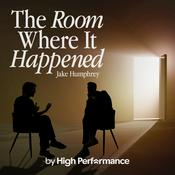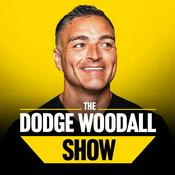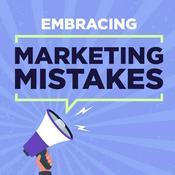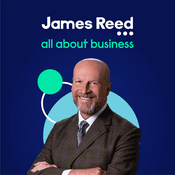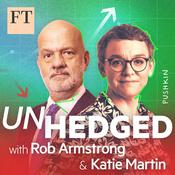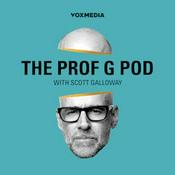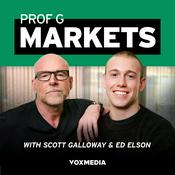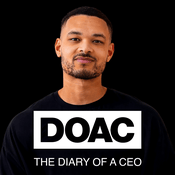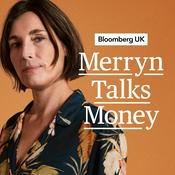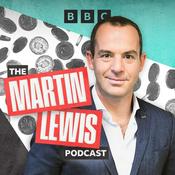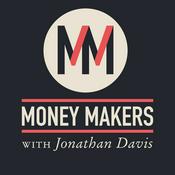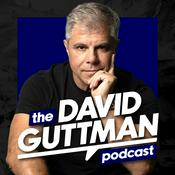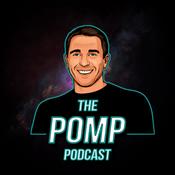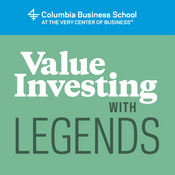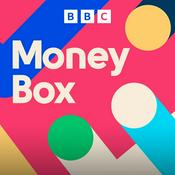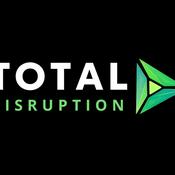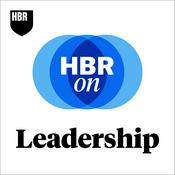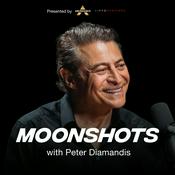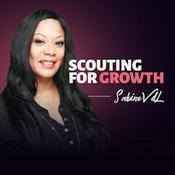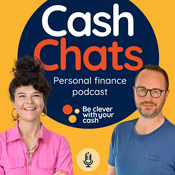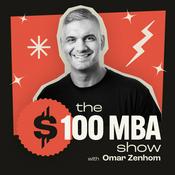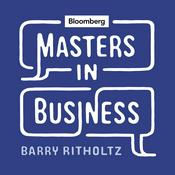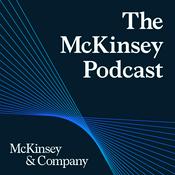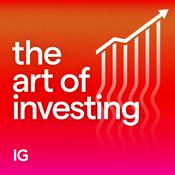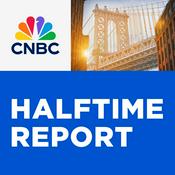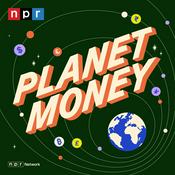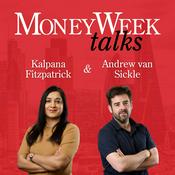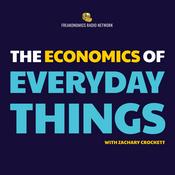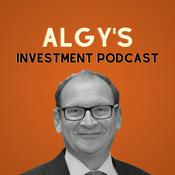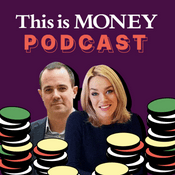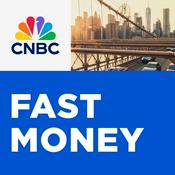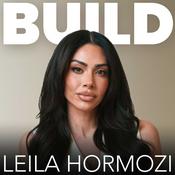143 episodes
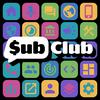
Pivots, Funding, and Building Apps That Last – Greg Cohn, Burner
10/12/2025 | 1h 29 mins.
On the podcast, I talk with Greg about knowing when to pivot, why most consumer apps shouldn't raise VC, and why making free trials optional outperformed making them the default.Top Takeaways: 📉 Know When to Pivot Wrangle struggled because it wasn’t solving a real problem. Burner succeeded because it met a clear need. Don’t be afraid to pivot when the product isn’t working.💭Most Consumer Apps Don’t Need VCVenture capital can be a blessing but also a curse. If you attract investment that doesn’t line up with your product vision or culture, the cash injection can turn out to be a costly mistake. Building a business that pays for itself is a better fit for most founders. 🔑 Focus on Retention Success is about keeping users, not just acquiring them. Burner’s ability to retain users, even short-term ones, proved its value. If users keep coming back, you’ve found something meaningful.🛠 Trials, Errors, WinsTesting was crucial to Burner’s growth. Every experiment was a learning opportunity. Don’t guess—test continuously, especially pricing, to find what drives retention and revenue.🎯 Small Changes, Big Results Minor tweaks, like switching to a free trial, led to significant growth. Optimize for retention with quick, simple changes. Even minor adjustments can have a substantial impact on results.About Greg Cohn: 🛫 Founder and CEO of Ad Hoc Labs📱 Greg Cohn is the founder of Burner, the leading mobile app for managing personal privacy through disposable phone numbers. With a passion for solving real-world problems, Greg transitioned from an early startup failure to building a successful business that prioritizes user privacy, simplicity, and seamless functionality.👋 LinkedIn 💬 Text Greg’s Burner: (323) 579-1830🧑💻 Open Roles at Ad Hoc Labs (Mention “Sub Club” to get a closer look at your resume.)Follow us on X: David Barnard - @drbarnardJacob Eiting - @jeitingRevenueCat - @RevenueCatSubClub - @SubClubHQEpisode Highlights:[0:00] The concept behind Wrangle, Greg’s first app[1:39] Twilio’s role in developing Wrangle and early challenges[3:24] Burner’s breakthrough with the “burner” feature for privacy[9:42] Wrangle’s pivot and what went wrong[13:36] Moving from paid downloads to a subscription model for Burner[24:47] Importance of user feedback in shaping the Burner product[33:24] The credit system and why it transitioned to subscriptions[38:55] Why retention and cohort analysis are key to Burner’s success[44:29] How Burner integrates new features like VPN for growth[54:33] Premium tier features: phone number lookup becomes popular[1:02:18] Bundling products: the decision to expand Burner’s offerings[1:09:53] Greg’s thoughts on acquiring apps vs building new features[1:23:38] Win of the year: faster paywall testing speed for Burner

How Tinder Captures More Value With Tiered Pricing and Consumables — Ravi Mehta
26/11/2025 | 1h 5 mins.
On the podcast we talk with Ravi about subscriptions as a force multiplier for consumables, why narratives matter more than metrics in goal-setting, and why you might want to try a longer onboarding, or a shorter one.📊 Stack the demand curveTinder didn’t just offer one price—it built a staircase of value. Low-tier subs, premium upgrades, and microtransactions filled in the gaps of user willingness to pay. The result? More people paid something, and some paid a lot. Don’t pick one price point. Map the whole curve. 🎯 Create value before monetizationThe fastest way to expand your TAM? Get users to the “aha” moment faster. Tinder made onboarding nearly instant to tap into a new, younger audience. In contrast, Sesame Care increased conversions with a 25-step flow by increasing user confidence. Friction isn’t the enemy—poor timing is.💰 Free is a monetization strategyAt Tinder, 85–90% of users never paid. But their presence was the product—fueling demand and justifying spend for the other 10–15%. Don’t underestimate free users. Sometimes, they’re the reason someone else is willing to pay.🧪 Price is productTinder didn’t guess what users would pay. It ran hundreds of localized price tests across SKUs to learn what users valued. Pricing isn’t a spreadsheet exercise—it’s part of the product experience and should be tested like one.📐 Narrative beats metricsOKRs fail when they skip the why. Ravi’s NCTs framework, which stands for Narratives, Commitments, Tasks, anchors goals in story and context. If your team is hitting the numbers but drifting on focus, it’s probably time to start with the story—not the spreadsheet.🪞 Monetization reveals product market fitMost apps undercharge. A scanner app might seem basic, but if it powers daily workflows, it’s worth real money. Set your price high enough to test willingness, not just conversion. If no one bites, you don’t have a monetization problem—you have a product one.About Ravi Mehta: 🔥 Former Chief Product Officer at Tinder and product leader at Meta, TripAdvisor, and Microsoft.📈 Ravi helps companies turn behavioral insights into scalable monetization systems — from multi-tier subscriptions to habit-forming onboarding flows.🗣 “If you have a product that’s solving an important need for someone, there’s a system around that that fits into the problem you’re solving, and you should think about the value of that system rather than just the price.”👋 LinkedInFollow us on X: David Barnard - @drbarnardJacob Eiting - @jeitingRevenueCat - @RevenueCatSubClub - @SubClubHQEpisode Highlights: [0:00] Subscriptions as a force multiplier for consumables[3:03] Filling the demand curve with tiers and microtransactions[6:47] Why free-to-play was Tinder’s breakthrough innovation[10:26] Matching monetization to different user behaviors[13:09] Creating value for whales without breaking the game[17:22] Experimenting your way into the perfect pricing model[20:03] When free, trial, or paid onboarding makes the most sense[23:47] Why apps are undermonetized and how to fix it[28:43] Why a longer onboarding boosted conversion 40%[35:20] How shorter onboarding expanded Tinder’s total market[43:03] Narratives, commitments, and tasks: a better goal framework[01:02:49] Growth is easier when you own your audience

Why AI Probably Won’t Kill Your App (But Ignoring It Will) — Eric Crowley, GP Bullhound
12/11/2025 | 1h 3 mins.
On the podcast, we talk with Eric about the opportunities and challenges of AI for consumer apps, what you can learn from Strava acquiring Runna, and the flawed thinking around ‘subscription fatigue’.Top Takeaways:💸 Value Overcomes FatigueConsumers would rather not pay for anything, but when a product delivers real value, they are happy to pay, even via subscriptions. Whether it’s training for a race, protecting memories, or learning something new, utility drives retention. Building long-term value wins every time.🧠 Build a ‘Category Killer’Eric identified ‘Strava for Pets’ and ‘Managing screen time and digital focus’ are opportunities for future ‘category killer’ apps. What do those two opportunities have in common? They are in categories where people are already spending a lot of money or have the opportunity to save a lot of time or money.🤝 Build to be loved, not acquiredThe best M&A strategy? Build something consumers truly love. Runna didn’t sell to Strava because they planned for it, building cool features Strava didn’t have. They sold because Runna was a fantastic product that personalized running in a way that expanded the market Strava couldn’t. ⚙️ Growth requires tough choicesConglomerates like Bending Spoons win through ruthless efficiency. They acquire apps, cut costs, and apply repeatable growth playbooks at scale. It can be controversial, but sometimes it takes an outsider to spot that the team that took an app to 1,000 users may not be the team to take it to 100,000 and beyond.📈 AI changes discoverySearch behavior is shifting, and SEO is no longer the only path to discovery. AI tools are becoming the starting point for many journeys, forcing marketers to rethink how users find and engage with products. Adapting to this shift means reimagining acquisition, not just tacking on AI features.About Eric Crowley: 👨💼 Partner at GP Bullhound, a global investment bank and venture capital firm.💰 Eric leads the Consumer Subscription Software (CSS) practice, advising high-growth companies on capital raises and acquisitions—recently including AllTrails and Runna.📊 “If you build a product that consumers truly love, strategics will come calling. It’s that emotional connection that drives outsized outcomes.”👋 LinkedInFollow us on X: David Barnard - @drbarnardJacob Eiting - @jeitingRevenueCat - @RevenueCatSubClub - @SubClubHQEpisode Highlights: [0:00] Opportunities in subscription apps[7:12] Consumers still pay when the product delivers lasting value[10:41] What Strava’s acquisition of Runna reveals about building apps that get bought[17:30] Genuine consumer love over designing for a single acquirer[19:27] Shifts in discovery forcing app marketers to rethink SEO and acquisition[28:56] Using AI to move faster, create better products, and deepen moats[32:47] How loosened restrictions could return profit margins for top apps[46:43] The next big subscription plays[52:04] Why Bending Spoons are forcing investors to rethink consumer tech[57:11] What makes the Bending Spoons model work[1:00:10] The Secondary market is changing how founders think about app exits[1:01:41] Trends, exits, and the state of the subscription app ecosystem

How Condé Nast Experiments, Bundles, and Wins — Michael Ribero, Condé Nast
29/10/2025 | 27 mins.
On the podcast, I talk with Michael about the blessing and curse of having a brand, why post-purchase is the perfect upsell moment, and why partnerships are hard to pull off but can be well worth the effort.Top Takeaways:🌱Growth is Built on ValueSustainable growth comes from consistently adding value, not just short-term tactics. Success lies in constantly evolving your product to meet users' needs. By regularly introducing new features and improving the user experience, premium products remain relevant and compelling. That value is continuous, with acquisition and retention working together to drive long-term growth.🎯 Personalize for Retention Different users have different goals, and understanding this is key to retention. Tailor offerings to specific user needs, whether it is job seekers, hobbyists, or niche audiences. By tailoring plans and features to user intent, brands can keep their products relevant. Without this personalization, users may disengage and churn.📊 Test to OptimizeWith hundreds of A/B tests each year, Condé Nast learns what works quickly. Data replaces debate, helping the team iterate faster. The goal is not just to optimize, it is to foster a culture of constant learning and growth.🔄 Retention Is a Journey Churn does not always mean goodbye. Many users return later when their needs change. Offering win-back deals, fresh trials, and adding new value helps bring users back and turn them into long-term subscribers. Retention is a process, not a straight line.🤖 AI Supports, Not LeadsAI should enhance the user experience, not overshadow it. AI’s role is to solve problems, helping users find content or personalize their experience, while staying behind the scenes. The real value is in solving the user’s needs, not in the technology itself.About Michael Ribero: 👨💻 SVP, Global Consumer Revenue at Condé Nast.📈 Michael leads the subscription and growth strategies for some of the world’s most iconic media brands, including Vogue, GQ, The New Yorker, and Wired. He focuses on optimizing user engagement, experimenting with monetization strategies, and evolving the digital experiences that drive both free and paid subscriptions.💡 "We’ve learned that true growth comes from continually adding value. Our approach isn’t just about scaling; it’s about providing lasting benefits that evolve with our users’ needs."👋 LinkedInFollow us on X: David Barnard - @drbarnardJacob Eiting - @jeitingRevenueCat - @RevenueCatSubClub - @SubClubHQEpisode Highlights: [0:00] Why launching a premium tier isn’t always the right move[2:51] Competing with AI-native upstarts and influencer content[5:39] Media's frenemy dynamic with platforms like Meta[8:25] Balancing free vs. paid content without eroding brand trust[11:46] How to recover from a failed paywall experiment[13:23] What bundling and post-purchase upsells look like at Condé Nast[19:41] Real-world LTV boosts from zero-CAC upsell moments[22:30] Lessons from low-priced tiers like the Washington Post’s Starter Pack[26:07] Tiering vs. focus: when a premium plan is actually a distraction

Buying vs. Building: Scaling Beyond a Single App — Josh Peleg, BlueThrone
15/10/2025 | 1h 7 mins.
On the podcast I talk with Josh about red flags that tank app valuations, why subscription-only apps are leaving money on the table, and how bootstrapped founders are cashing out for millions in months, not years.Top Takeaways:🎯 Build to sell, but build smartFlipping an app in under a year is still possible, but the skill that matters most now is marketing. With AI lowering the barrier to development, distribution has become the real differentiator. Founders who master organic channels, community, and creator-driven marketing are the ones who land meaningful exits.💰 Predictability drives valueBuyers pay more for revenue they can trust. Apps built on recurring subscriptions with strong retention and low churn are far more attractive than those relying on ads or one-time purchases. Predictable cash flow isn’t just safer, it’s worth a higher multiple.🚩 Short-term tricks destroy long-term valueArtificially inflating numbers before a sale, such as pushing lifetime deals to boost revenue, can quickly kill a deal. Serious acquirers look for sustainable metrics, not spikes. Authentic growth, honest reporting, and healthy retention are the hallmarks of a business built to last.🔄 Fewer and deeper betsThe age-old quality-over-quantity principle still holds. After buying nearly a hundred small apps early on, BlueThrone learned that broad portfolios don’t win. Their new playbook focuses on a handful of apps with real product-market fit, strong organic traction, and teams ready to scale into category leaders.💡 Hybrid monetization unlocks new growthBorrowing tactics from gaming, like consumables, day passes, and rewarded ads, helps subscription apps reach more users and capture more value. These models make spending feel flexible and fair, turning a single price point into an entire revenue spectrum.About Josh Peleg: 📈 Head of Business Development and M&A at BlueThrone, one of the world’s leading app acquirers.💡 Josh helps founders scale and exit their apps, guiding deals that range from six to eight figures.🎮 Before joining BlueThrone, he led mergers and acquisitions in the mobile gaming industry, giving him a front-row view of how distribution and monetization strategies evolve.🗣 “The best apps today aren’t just great products—they’re great stories. Marketing and distribution are what turn a good idea into a real business.”👋 LinkedInFollow us on X: David Barnard - @drbarnardJacob Eiting - @jeitingRevenueCat - @RevenueCatSubClub - @SubClubHQEpisode Highlights: [0:00] Lesson learned from BlueThrone’s early “go-wide” strategy [6:20] Why founders have to be more than great builders [8:19] The pieces that lead to higher valuations[12:37] Five signals that can kill a deal[18:12] When (and when not) to raise[24:33] Shifting from a broad portfolio to a few deep bets [33:15] The future of monetization[45:07] What drives the best exits in today’s acquisition market[52:00] How founders can position themselves for life-changing exits
More Business podcasts
Trending Business podcasts
About Sub Club by RevenueCat
Listen to Sub Club by RevenueCat, The Room Where It Happened and many other podcasts from around the world with the radio.net app

Get the free radio.net app
- Stations and podcasts to bookmark
- Stream via Wi-Fi or Bluetooth
- Supports Carplay & Android Auto
- Many other app features
Get the free radio.net app
- Stations and podcasts to bookmark
- Stream via Wi-Fi or Bluetooth
- Supports Carplay & Android Auto
- Many other app features


Sub Club by RevenueCat
download the app,
start listening.
